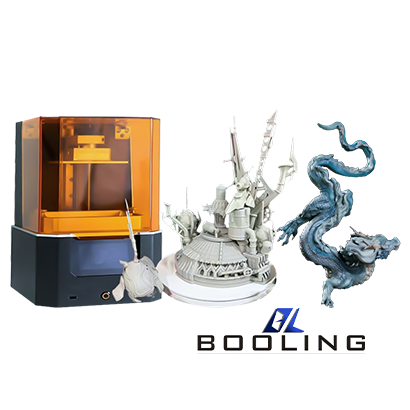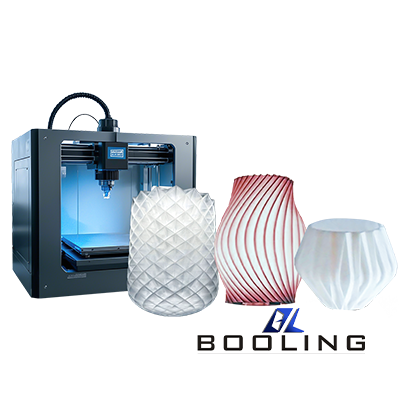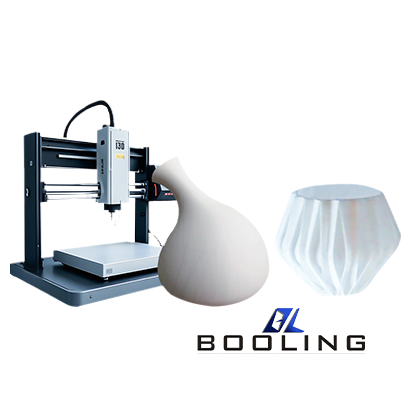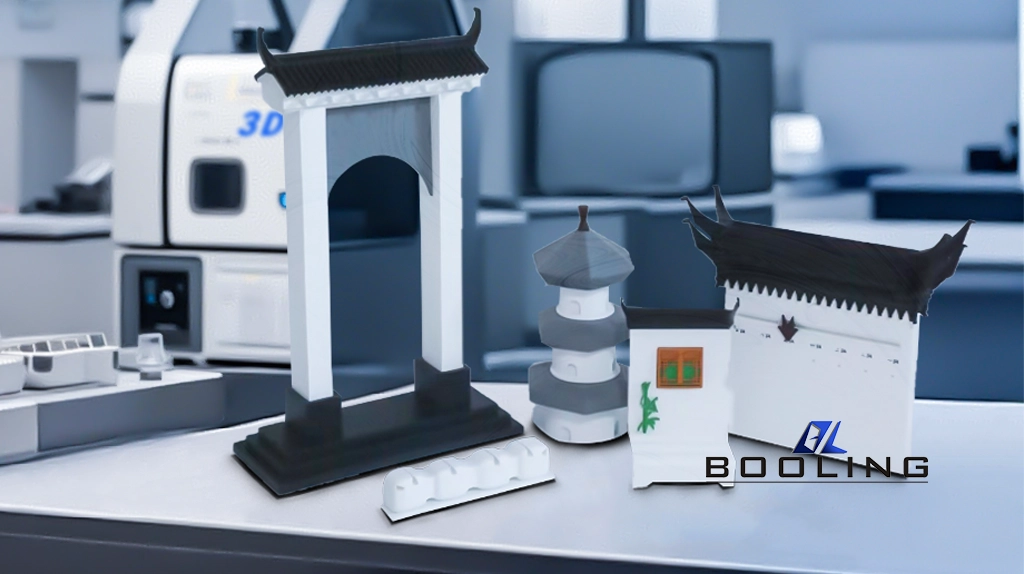Home > 3D Printing Service > Resin 3D Printing
Resin 3D printing uses high-quality resin material filling, thin layer production, curing, layer-by-layer stacking, post-processing, and other processes to provide efficient rapid prototyping services for manufacturers in biomedicine, industry, automobiles, aerospace, and other industries. Booling has extensive experience in resin 3D printing and has significant advantages in the precision details and smooth surface of the product.

3D Resin Printing
Resin 3D printing mainly relies on SLA technology, which is a rapid prototyping technology based on light-curing resin and has the characteristics of high precision, clear details, and smooth surface.
- Thermosetting
- Thermoplastic
Resin 3D Printing Capabilities
Booling uses CAD software to create resin 3D printing models, which can optimize the design and parameters before molding.
·
US
Metric
Resin
47.2in. x 31.4 in. x 23.6 in.
1200mm x 800mm x600mm
*The professional resin printing service for 3D printing utilizes high-quality equipment and material expertise to provide printed materials with excellent accuracy and smooth surface finish.
Resin 3D Printing Material
Booling provides various types of resin materials such as natural resin, composite resin, addition polymer, condensation polymer, thermoplastic resin, etc. to meet the different needs of 3D printing products.
- According to the source of the resin
Natural resin
Synthetic resin
- According to processing behavior
Thermoplastic resin
Thermosetting resin
- According to the type of synthesis reaction
Addition polymer
Condensation polymer
The Advantages & Disadvantages of Resin 3D Printing
Resin 3D printing can use digital models to create three-dimensional products and achieve customization of specific shapes, which has significant advantages.
1.Booling resin 3D printing uses high-quality printer equipment to produce printed products with excellent precision and surface finish.
- Our engineers have more than ten years of experience in optimizing print settings, managing support structures, and resolving potential printing issues to achieve the best printing results
- We provide a dedicated technical team that can answer questions during the printing process and provide technical assistance to ensure smooth printing.
- Provide rapid prototyping to achieve rapid delivery of products

Application of Resin 3D Printing
Booling provides rapid prototyping and direct production of some tools and components in the fields of automotive, aerospace, medical, industrial, construction, etc.

Guidelines for Resin 3D Printing
Compared with traditional mold processing solutions, resin 3D printing provides higher strength for complex geometric shapes.
Resin 3D Printing
Resin 3D printing materials are organic polymers that are solid, semi-fluid, or liquid at room temperature. They are generally insoluble in water but soluble in organic matter. Compared with traditional mold processing methods, resin 3D printing has faster printing speed and higher quality, and is suitable for the production of small batches of products.

Resin 3D Printing Technology
Booling provides stereolithography, digital light processing, digital light synthesis, material jetting, and other resin 3D printing technologies, providing more flexible process options for the customization of personalized products.
- Stereolithography (SLA)
Use a laser beam to scan the surface of the photosensitive resin point by point. After the shape of the first layer is completed, the production platform drops a certain distance and the solidified layer is immersed in liquid resin. Repeat the operation until the three-dimensional product is completed. SLA technology can achieve a minimum resolution of 25 microns, which is suitable for the depiction of product details.
- Digital Light Processing (DLP)
Booling uses a digital light projector to project the image of each layer onto the surface of the photosensitive resin and solidify a layer at the same time. DLP does not use point-by-point scanning but exposes and solidifies the image for a whole layer at one time to increase the printing speed.
- Digital Light Synthesis (DLS)
DLS technology combines the advantages of SLA and DLS technologies. Engineers use high-resolution projectors to achieve precise interaction between oxygen and light and realize the transformation of liquid resin into three-dimensional objects.
- Material Jetting (MJP)
Material jetting technology can achieve multi-color printing, use soluble support materials, and simplify the post-processing process.
Resin 3D Printing Requirements
Booling provides a dedicated team of engineers to provide technical guidance at any time to achieve the smooth completion of resin 3D printing.
- Design plan: Engineers can help users design resin 3D printing files, and can also optimize according to the design files provided by users to ensure that the product has an appropriate wall thickness, support, and other parameters, and provide specific guidelines and optimization suggestions.
- Printing size and tolerance: Booling can achieve micron-level accuracy by adjusting the printing material, equipment accuracy, and printing parameters.
- Layer thickness and resolution: The layer thickness and resolution of 3D printing determine the precision of the model. The smaller the layer thickness, the smoother the surface of the printed product. Booling provides high-resolution 3D printers that can print medical models, precision molds, and other products, which are used in fields with extremely high precision requirements.
- Surface treatment: Booling can provide various surface treatment solutions such as solvent cleaning, UV curing, polishing, grinding, painting, or custom finishing to achieve the required appearance and smoothness of the product.
- Compliance: If your project requires specific compliance certification, such as in the medical, aerospace, and other industries, you need to ensure that it is approved for such applications.
